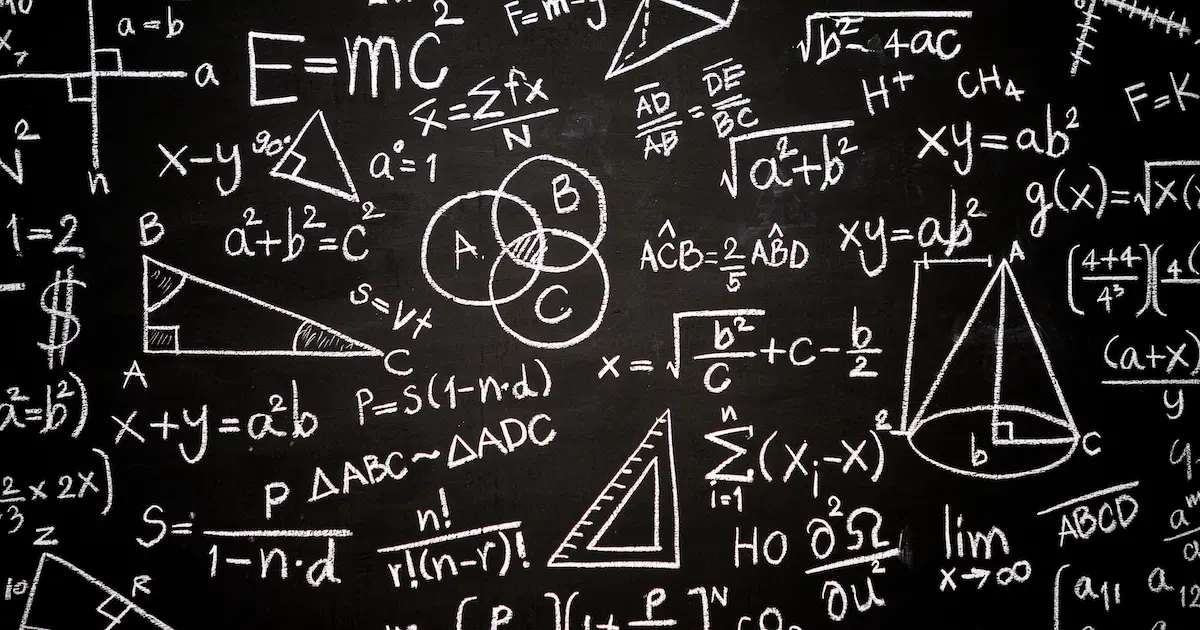Nonhomogeneous Linear ODEs of Second Order
Explore the structure of the general solution for second-order nonhomogeneous linear ODEs in relation to their homogeneous counterparts. This post proves the existence of a general solution and the non-existence of singular solutions.
TL;DR
- General solution of a second-order nonhomogeneous linear ODE $y^{\prime\prime} + p(x)y^{\prime} + q(x)y = r(x)$:
- $y(x) = y_h(x) + y_p(x)$
- $y_h$: The general solution of the homogeneous ODE $y^{\prime\prime} + p(x)y^{\prime} + q(x)y = 0$, which is $y_h = c_1y_1 + c_2y_2$
- $y_p$: A particular solution of the given nonhomogeneous ODE
- The response term $y_p$ is determined solely by the input $r(x)$. For the same nonhomogeneous ODE, $y_p$ does not change even if the initial conditions change. The difference between two particular solutions of a nonhomogeneous ODE is a solution of the corresponding homogeneous ODE.
- Existence of a general solution: If the coefficients $p(x)$, $q(x)$, and the input function $r(x)$ of a nonhomogeneous ODE are continuous, a general solution always exists.
- Non-existence of singular solutions: The general solution includes all solutions of the equation (i.e., no singular solutions exist).
Prerequisites
General and Particular Solutions of Second-Order Nonhomogeneous Linear ODEs
Consider the second-order nonhomogeneous linear ordinary differential equation
\[y^{\prime\prime} + p(x)y^{\prime} + q(x)y = r(x) \label{eqn:nonhomogeneous_linear_ode}\tag{1}\]where $r(x) \not\equiv 0$. The general solution of equation ($\ref{eqn:nonhomogeneous_linear_ode}$) on an open interval $I$ is the sum of the general solution $y_h = c_1y_1 + c_2y_2$ of the corresponding homogeneous ODE
\[y^{\prime\prime} + p(x)y^{\prime} + q(x)y = 0 \label{eqn:homogeneous_linear_ode}\tag{2}\]and a particular solution $y_p$ of equation ($\ref{eqn:nonhomogeneous_linear_ode}$), in the form
\[y(x) = y_h(x) + y_p(x) \label{eqn:general_sol}\tag{3}\]Furthermore, a particular solution of equation ($\ref{eqn:nonhomogeneous_linear_ode}$) on the interval $I$ is a solution obtained from equation ($\ref{eqn:general_sol}$) by assigning specific values to the arbitrary constants $c_1$ and $c_2$ in $y_h$.
In other words, adding an input $r(x)$, which depends only on the independent variable $x$, to the homogeneous ODE ($\ref{eqn:homogeneous_linear_ode}$) adds a corresponding term $y_p$ to the response. This added response term $y_p$ is determined solely by the input $r(x)$, regardless of the initial conditions. As we will see later, if we take the difference between any two solutions $y_1$ and $y_2$ of equation ($\ref{eqn:nonhomogeneous_linear_ode}$) (i.e., the difference between particular solutions for two different sets of initial conditions), the term $y_p$, which is independent of the initial conditions, cancels out, leaving only the difference between ${y_h}_1$ and ${y_h}_2$. By the Superposition Principle, this difference is a solution of equation ($\ref{eqn:homogeneous_linear_ode}$).
Relationship Between Solutions of Nonhomogeneous and Corresponding Homogeneous ODEs
Theorem 1: Relationship Between Solutions of Nonhomogeneous ODE ($\ref{eqn:nonhomogeneous_linear_ode}$) and Homogeneous ODE ($\ref{eqn:homogeneous_linear_ode}$)
(a) The sum of a solution $y$ of the nonhomogeneous ODE ($\ref{eqn:nonhomogeneous_linear_ode}$) and a solution $\tilde{y}$ of the homogeneous ODE ($\ref{eqn:homogeneous_linear_ode}$) on some open interval $I$ is a solution of equation ($\ref{eqn:nonhomogeneous_linear_ode}$) on $I$. In particular, equation ($\ref{eqn:general_sol}$) is a solution of equation ($\ref{eqn:nonhomogeneous_linear_ode}$) on $I$.
(b) The difference between two solutions of the nonhomogeneous ODE ($\ref{eqn:nonhomogeneous_linear_ode}$) on an interval $I$ is a solution of the homogeneous ODE ($\ref{eqn:homogeneous_linear_ode}$) on $I$.
Proof
(a)
Let’s denote the left-hand side of equations ($\ref{eqn:nonhomogeneous_linear_ode}$) and ($\ref{eqn:homogeneous_linear_ode}$) as $L[y]$. Then, for any solution $y$ of equation ($\ref{eqn:nonhomogeneous_linear_ode}$) and any solution $\tilde{y}$ of equation ($\ref{eqn:homogeneous_linear_ode}$) on interval $I$, the following holds:
\[L[y + \tilde{y}] = L[y] + L[\tilde{y}] = r + 0 = r.\](b)
For any two solutions $y$ and $y^*$ of equation ($\ref{eqn:nonhomogeneous_linear_ode}$) on interval $I$, the following holds:
\[L[y - y^*] = L[y] - L[y^*] = r - r = 0.\ \blacksquare\]The General Solution of a Nonhomogeneous ODE Includes All Solutions
For a homogeneous ODE ($\ref{eqn:homogeneous_linear_ode}$), we know that the general solution includes all solutions. Let’s show that the same holds for the nonhomogeneous ODE ($\ref{eqn:nonhomogeneous_linear_ode}$).
Theorem 2: The General Solution of a Nonhomogeneous ODE Includes All Solutions
If the coefficients $p(x)$, $q(x)$, and the input function $r(x)$ of equation ($\ref{eqn:nonhomogeneous_linear_ode}$) are continuous on some open interval $I$, then every solution of equation ($\ref{eqn:nonhomogeneous_linear_ode}$) on $I$ can be obtained from the general solution ($\ref{eqn:general_sol}$) of equation ($\ref{eqn:nonhomogeneous_linear_ode}$) on $I$ by assigning suitable values to the arbitrary constants $c_1$ and $c_2$ in $y_h$.
Proof
Let $y^*$ be any solution of equation ($\ref{eqn:nonhomogeneous_linear_ode}$) on $I$, and let $x_0$ be any $x$ in the interval $I$. By the theorem on the Existence of a General Solution for homogeneous ODEs with continuous variable coefficients, $y_h = c_1y_1 + c_2y_2$ exists. Also, by the method of variation of parameters, which we will discuss later, $y_p$ also exists. Therefore, the general solution ($\ref{eqn:general_sol}$) of the nonhomogeneous ODE ($\ref{eqn:nonhomogeneous_linear_ode}$) exists on the interval $I$. Now, by Theorem 1(b) which we proved earlier, $Y = y^* - y_p$ is a solution of the homogeneous ODE ($\ref{eqn:homogeneous_linear_ode}$) on interval $I$, and at $x_0$,
\[\begin{gather*} Y(x_0) = y^*(x_0) - y_p(x_0) \\ Y^{\prime}(x_0) = {y^*}^{\prime}(x_0) - y_p^{\prime}(x_0) \end{gather*}\]According to the Existence and Uniqueness Theorem for Initial Value Problems, for the initial conditions above, there exists a unique particular solution $Y$ of the homogeneous ODE ($\ref{eqn:homogeneous_linear_ode}$) on interval $I$, which can be obtained by assigning suitable values to $c_1$ and $c_2$ in $y_h$. Since $y^* = Y + y_p$, we have shown that any particular solution $y^*$ of the nonhomogeneous ODE ($\ref{eqn:nonhomogeneous_linear_ode}$) can be obtained from the general solution ($\ref{eqn:general_sol}$). $\blacksquare$
